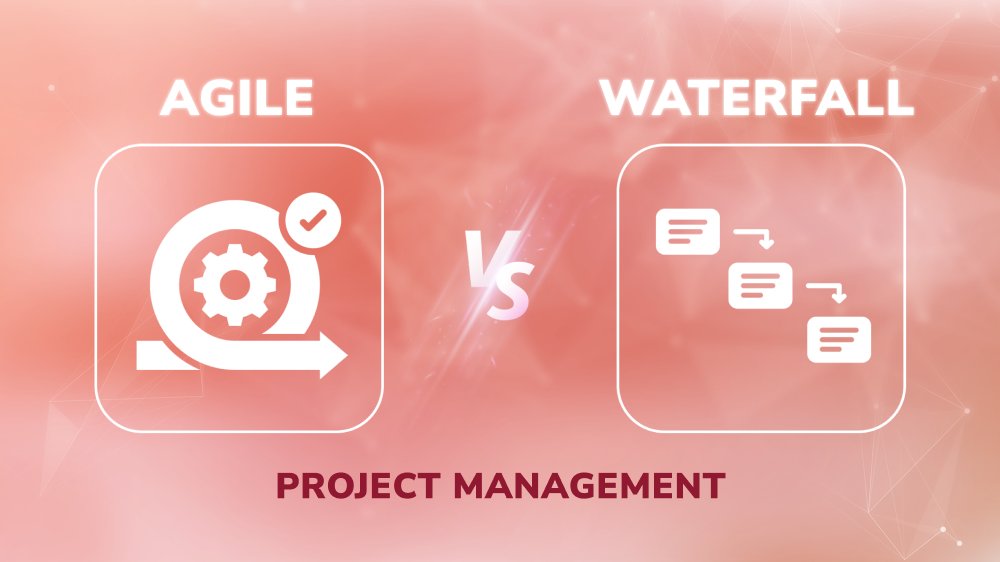
An Outsourcing Guide: The Ideal Team Structure in Software Engineering

Content Map
More chaptersSoftware outsourcing or IT project outsourcing is the broad term covering a variety of services provided by third-party vendors – also known as outsourcing companies. The nature of services and the level of deep expertise involved heavily depend on the project’s complexity and clients’ business objectives – they can be companies and organizations of different sizes and across industries.
Through these services, business owners and project managers can delegate our IT needs to an expert hand and leverage materials and human resources from the vendors to conduct their projects at a fraction of the cost – usually much lower than in-house development. At your disposal, you can determine your own business strategy, whether to outsource your project’s entire software development process to the intermediary companies, or you can staff your in-house engineering teams with outsourced professionals - also known as IT staff augmentation. Either way has its own pros and cons. If you plan an optimized development team structure for outsourcing, there are a few core areas to consider. And this is a brief guide to setting up your team composition before discussing the details with a service provider.
Why Outsource a Software Development Team?

Dedicated software teams are one of the most popular outsourcing models, in which the clients contract a whole team of full positions (per required) with a third-party outsourcing company. Derived from the predefined roles and responsibilities as well as agreed-on team composition, the contractor will oversee the entire process, ranging from recruiting, onboarding, and training to further development and project management.
At your disposal, a self-managed team is assembled of various professionals, ideally including a project manager, a Scrum master, a business analyst, a product owner, software developers (front-end and back-end), UX/UI designers, software testing engineers, DevOps engineers, data scientists, and more. Each and every team member brings in different skills and knowledge dedicated to various aspects of one project, and together, they combine their expertise to achieve common goals. That’s how a traditional team is composed, but the software development team structure can vary on the business requirements, project scope, deadlines, budgets, and heaps more other key factors.
A dedicated team is the best fit for complex and long-term software development projects, which entail additional assistance and resources not available in-house. With such a team, you leverage many benefits, such as cost-efficiency, scalability, agility, etc. Indeed, contracting an outsourced development team can provide multiple benefits, and some of them are the shared ones of IT outsourcing in general.
Lower the Development Costs in Total
Outsourcing has been proven to be the best way to reduce costs regarding software development, and the reasons are plentiful.
Firstly, you do not have to pour large amounts of money into acquiring permanent employees, especially when the salaries of developers are currently utmost high due to the scarcity of tech talent in the IT job market.
Secondly, there are no up-front costs involved in hiring an in-house team, such as the overhead related to recruiting and training costs or investing in office space and equipment – all of which would be far more expensive than opting for an outsourced development team.
Next, you have no trouble with sunk costs to maintain a full-fledged team while the workloads are low or fluctuating, not to mention the resources and time you can save from the hiring processes, operations, equipment, or office supplies.
Last but not least, you, as an employer, can benefit much from the “friendly” wage ranges when hiring IT professionals from nearshore or offshore locations, typically Vietnam. The country has recently become the new hero in the tech industry for many reasons, and one of the most persuasive ones is price.
Access the Global Talent Pool
No doubt about it; outsourcing to third-party IT companies buys access to a broader range of talent worldwide. You are no longer stuck with the limited and expensive local pool. Instead, you can choose offshore or nearshore outsourcing, which is by far the most popular option to find a balance between cost and quality. The providers are widely spread globally, and they can access talented developers in different countries at your convenience.
When you do business with tech service vendors, they are responsible for sourcing and providing experts with the best skills that match your needs. Plus, their personnel is usually well-trained in both the soft and technical aspects of software engineering, so it will not be a big deal for them to quickly adapt to your project’s requirements – something that an in-house team would take more time and effort to do.
Mitigate Risks
On top of that, when you outsource your software development projects to a reliable provider, there is less risk than recruiting IT professionals in-house. It means you can expect to maximize the quality of the delivered product because they usually have stringent processes and standards and diverse experience from working on various projects. Additionally, you get expert advice on improving your project’s performance from the contractor’s side, lowering the risks of project failures.
You can grasp a higher chance of success as you delegate your projects to dedicated professionals who are familiar with the best practices and have in-depth technical skills. With a top-notch development team, you can be sure that your project fulfills all the required criteria.
Common Approaches to Structure a Software Development Team

How you structure your development team is not rigidly fixed but flexibly adaptive according to your project requirements and your team’s functionality. From that, you can decide which roles to include and which not to. Here are a few common approaches that you can refer to when considering an outsourced team:
Agile Team
It is a “cross-functional” model based on the Agile methodology, such as Scrum and Kanban, to complete tasks in short cycles and deliver value to customers quickly. An Agile software development team concentrates on iterative and incremental development where requirements and solutions fluctuate constantly through the collaborative effort of self-organizing cross-functional teams. It works best in an environment where teams must be flexible and adaptable to changes during a project’s lifespan.
An Agile team structure often consists of technical and non-technical team members, such as a project manager, software architect, engineers (back-end and front-end), testers, UI/UX designers, DevOps engineers, data scientists, etc., and it varies case by case and by the project focus. Usually, the team lead can be either a Scrum master or a product owner. Agile teams perform well when being put in an environment with heavier workloads, tight deadlines, and various changes.
Frontend & Backend Team
This way of structuring teams is usually applied to web-based projects, like eCommerce websites or mobile applications. Web-based project teams can be divided into front-end and back-end groups. The front-end developers deal with user interface (UI) and user experience (UX), while the back-end ones take care of server-side programming, databases, and more. Having separate teams for front-end and back-end development shortens the project timeline, increases productivity, and helps with product scalability.
Simply put, the front-end team is responsible for coding websites and applications for a great user experience, while the back-end team focuses on server-side web application logic. The combination of these two and their works makes up a complete web solution. The roles in each team can include front-end developers, back-end developers, full-stack developers, testers, and DevOps engineers. Depending on the project scope and requirements, they might also recruit UI/UX designers or data scientists if needed.
Full Stack Team
As its name implies, this is a team composed of developers who can work on all layers of software development, ranging from front-end, back-end, and sometimes even the database. In this composition, each member is responsible for multiple tasks – from front-end to back-end development, from design to development, testing, and deployment. It also requires each of them to be well-versed in the relevant technologies and skills. Accordingly, a full-stack team is capable of building applications from end-to-end, including mobile apps or web applications, as well as backend infrastructure maintenance capabilities.
With such a team, you will have fewer people working on the same project but with more expertise. Hence, you can expect faster solutions and better quality delivered faster – an ideal structure for projects with tight deadlines. Because of that, full-stack teams are suitable in scenarios when the project scale is small or medium-sized but requires diverse skill sets to complete. It can be implemented quickly with minimum overhead cost and complexity.
DevOps Team
Nothing is new about the advance of the DevOps adoption movement nowadays. A DevOps team is a formation in which development and operations teams work jointly. The mixed structure helps to improve collaboration between teams and allows the whole process to be more efficient and automated.
As a result, the team can quickly respond to customer feedback by pushing out new features or updates in a shorter amount of time. It also speeds up deployments thanks to automation and continuous integration. That said, DevOps teams are more suitable for companies that need software solutions with quick response times and frequent changes.
Hybrid Team
The concept of hybrid teams is not confined to functions or roles but rather to the way of working. It can be a combination of generalists and specialists, in-house resources and outsourcing partners, or a blend of different models. For example, you can mix Agile and DevOps teams together for a particular project; or design a team of both in-house developers and remote outsourced professionals.
At the end of the day, it all comes down to what works best for your organization’s specific needs and preferences. A hybrid team structure allows you to combine different components of software development into one team, creating a stronger and more efficient unit. The team structures can be adjusted to fit the project’s timeline, budget, and goal.
Therefore, hybrid teams are suitable for large-scale projects that require more than one specific model or when resources need to be allocated from different sources. They can help you build a flexible team quickly with the right mix of skills and cost-efficiency, as well as scale up quickly according to the project’s growth.
QA Team
A quality assurance or QA testing team is tasked to verify that an application’s features and functions work correctly and code quality standards are met. The core elements of QA testing are software compatibility, security, performance, and user experience.
Commonly, a quality assurance engineer must own deep knowledge in the field of software testing, such as manual or automated tests, to validate that a product meets the business stakeholders’ requirements and works as expected. And the structure of a QA team consists of both manual and automation testers, test engineers, and a lead.
Automation engineers are responsible for developing automated tests to increase the speed of testing; manual testers focus on detailed exploratory tests and bug submissions, while the test lead oversees planning and executing the testing process. This team can be built in-house or with outsourcing partners depending on the scope of the project.
In conjunction with these team models, you can choose to build or contract out many other crews to serve your specific organizational structure as well as business needs, such as customer support, UI/UX design, data science, cybersecurity, or business analysis team. There is a demand, so there will be the right team to fulfill it.
Remember that there will be no one-size-fits-all team structure for every project or business. Also, mark one thing, teams of any structure, function, or combination can be outsourced as long as you identify what exactly you want and come to the right partner. With careful consideration, you can build an efficient team with the right mix of capabilities to deliver your project on time and within budget.
Decide the Right Structure for an Outsourced Software Development Team

Aiming at the project’s success, you should own a strong composition of personnel to back you up; therefore, you will need an extra plan for structuring your teams.
You can begin with project planning by understanding your project’s needs thoroughly, starting from technical requirements, complexity, timeline and all the way to budget and your in-house resources. The gathered insights play a critical part in ascertaining the size, type, function, and, eventually, the structure of a full-fledged team that you need.
What’s next? As a business owner, you must make up your mind about the level of control over your team, which will partially contribute to shaping your ideal team structure. If you prefer close management, an in-house team deployed with your supervision and augmented IT staff will be a better fit; if you’d rather have someone handling things for you, outsourcing a dedicated team can help bring it to life. In such cases, the structure of the team will depend on who’s leading it, and you can choose between a fully dedicated or hybrid development team.
Communication is also a factor to consider when building your team structure. Our world has become so globalized, with the help of technology, that remote teams have grown to be a popular solution for companies across the globe. Remote teams provide instant access to a larger pool of experienced professionals and reduce overhead costs significantly; thus, they can be an ideal option for businesses with smaller budgets or limited resources. However, it is essential to evaluate whether the team will be able to adapt to their remote situation and stay productive, as well as whether the lines of communication between teams are clear. At this point, you will have to decide between onshore, nearshore, or offshore outsourcing, which one will best suit your needs and give you the convenience to manage and communicate with your external teams.
Above all, there needs to be an in-depth understanding of cost implications when selecting a team structure. Outsourcing, whether the entire project or resources, is often a more cost-effective option than building an in-house team. No matter the choice of team structure, you must ensure it aligns with your financial commitment capabilities. It directly influences how you request from an outsourced team, how big it is, and which positions need to include and which do not.
Final Thoughts

Ultimately, the right development team structures are significantly important (whether in-house or outsourced), and they should be determined after careful evaluation of your project’s everything, like the product vision, the resources you can allocate to it, and other considerations previously discussed. So, make sure you portray the most appropriate team structure in software engineering and the requirements for your team members before approaching an outsourcing company to assemble a team. Do not start searching for a service vendor unless you have identified the exact structure of your software development team. And do consult with experts if you need any assistance in coming up with the proper one. Have no clue? Reach out to one of the most experienced service providers in this field – Orient Software. IT staffing services are not our only forte, and we are committed to delivering much more value to your business. Contact us and find out.






